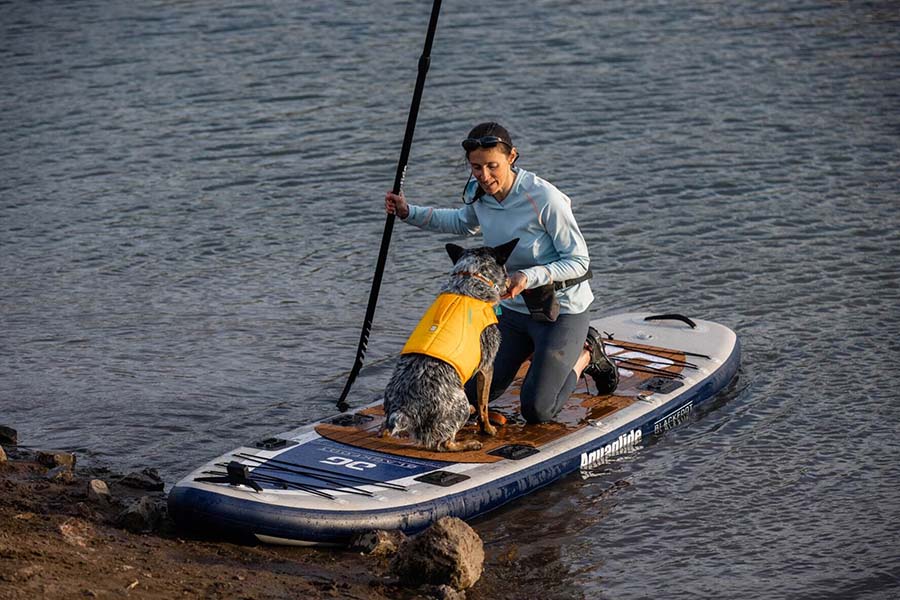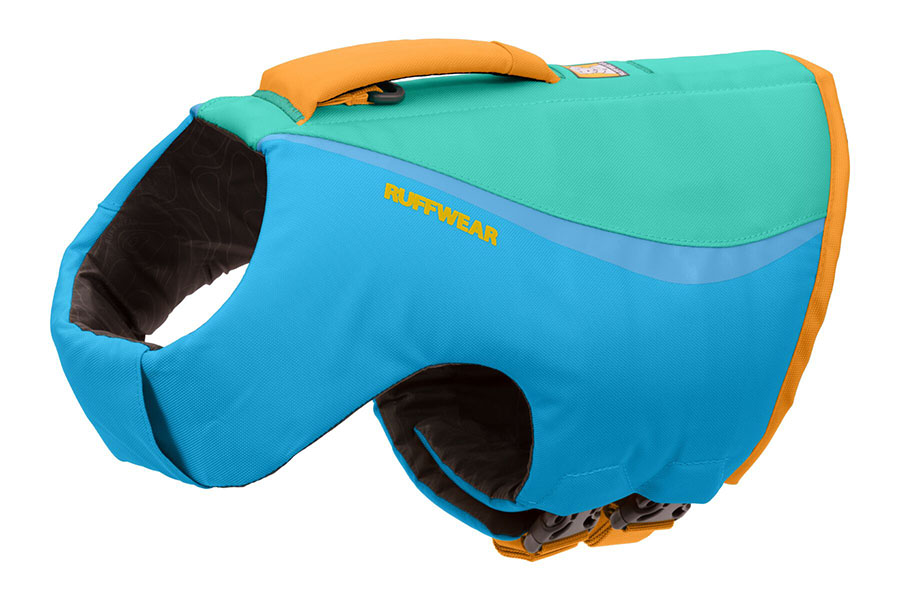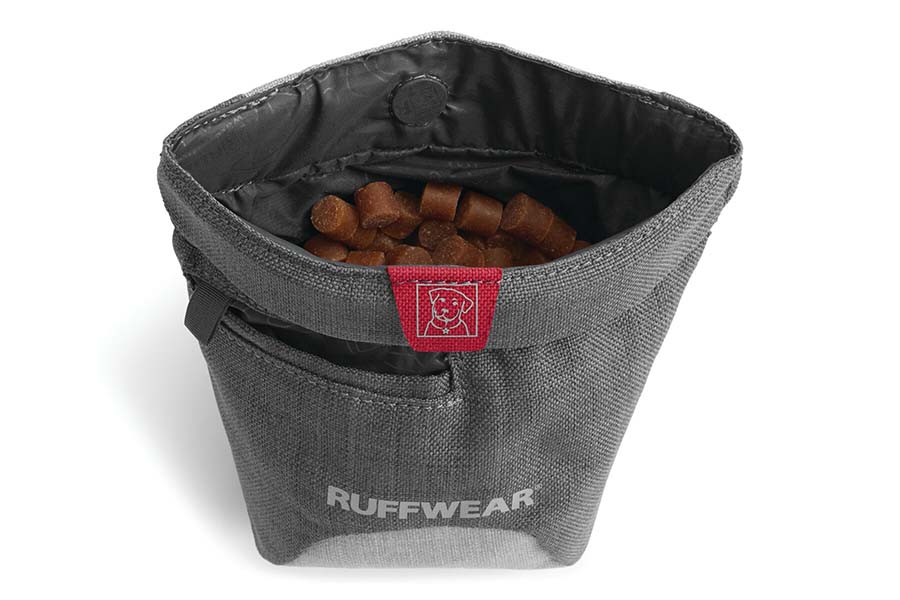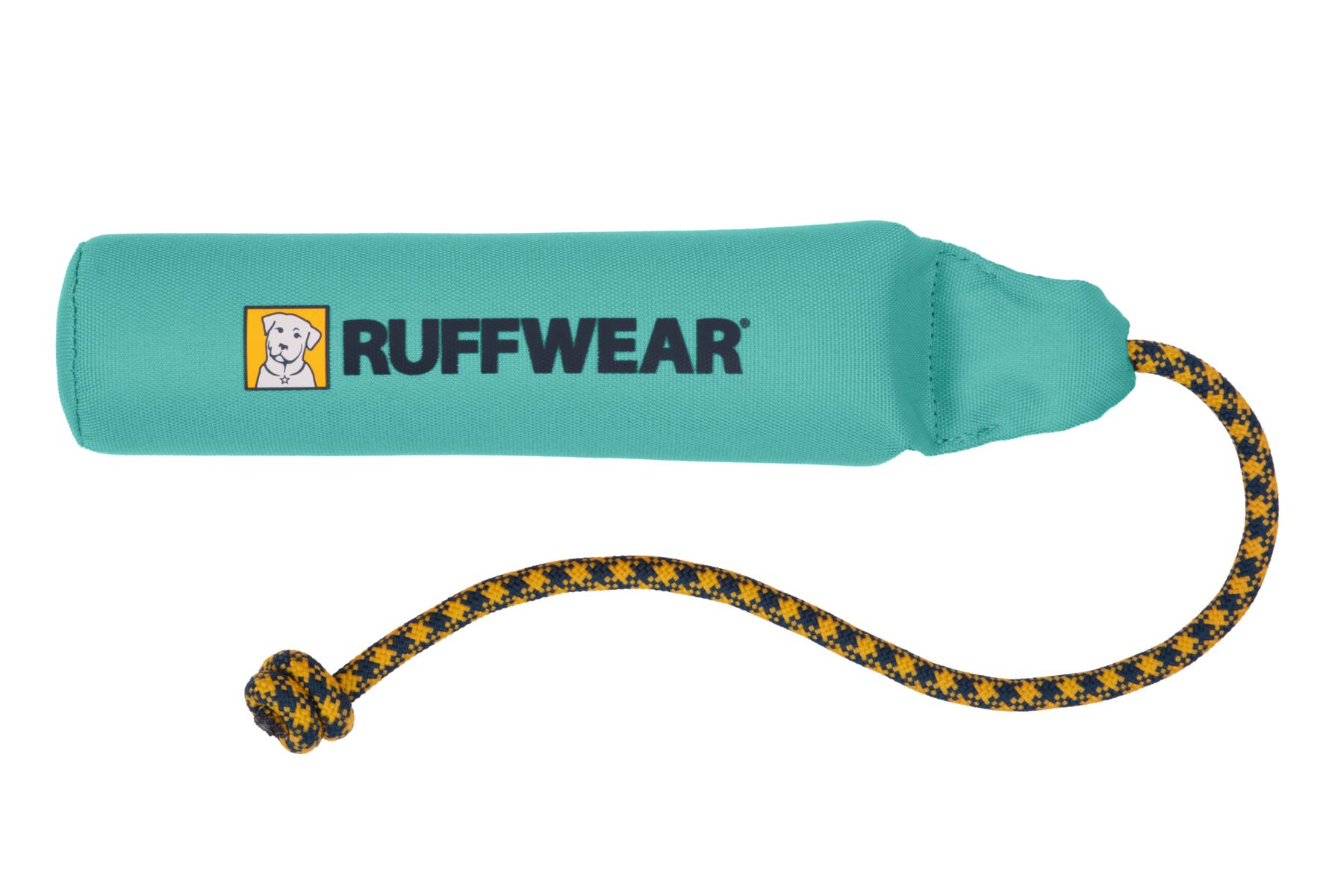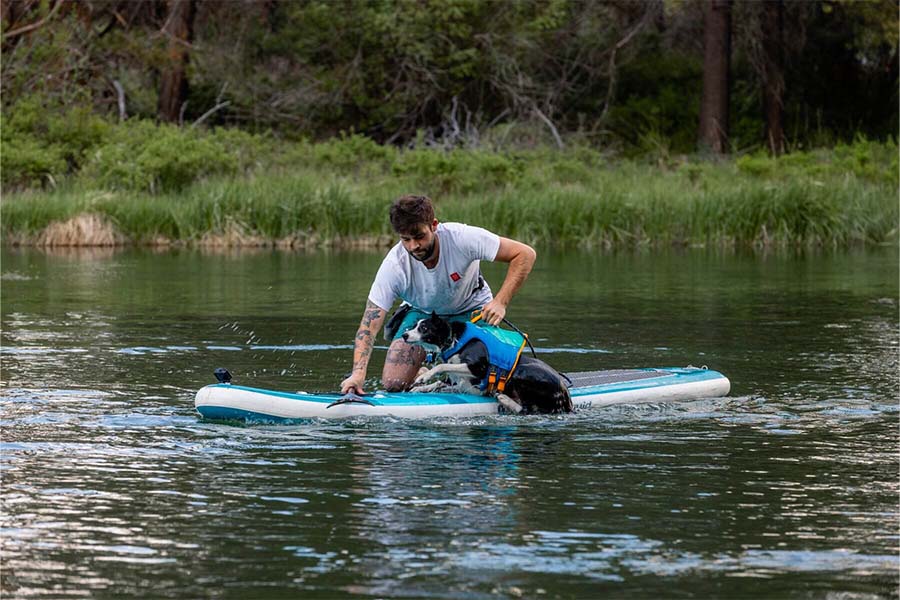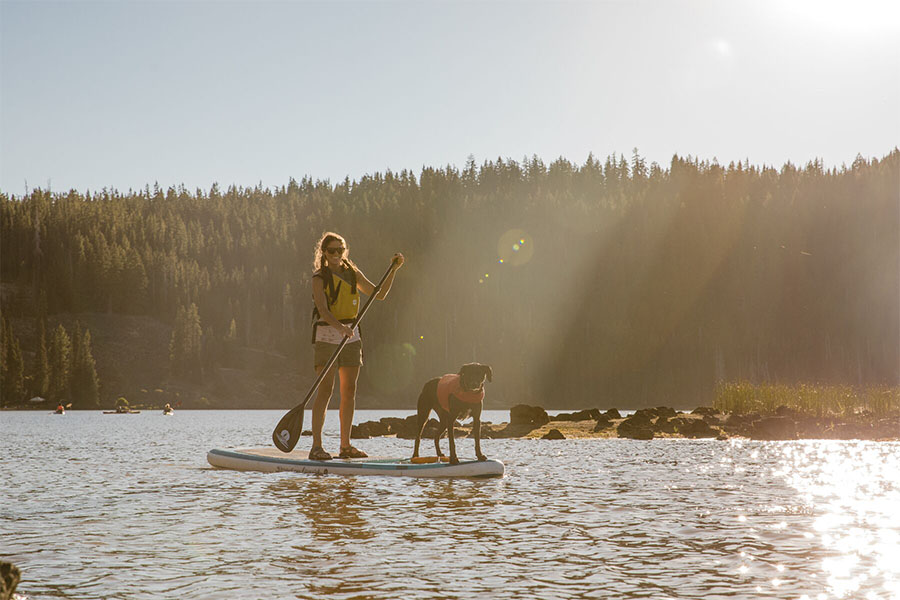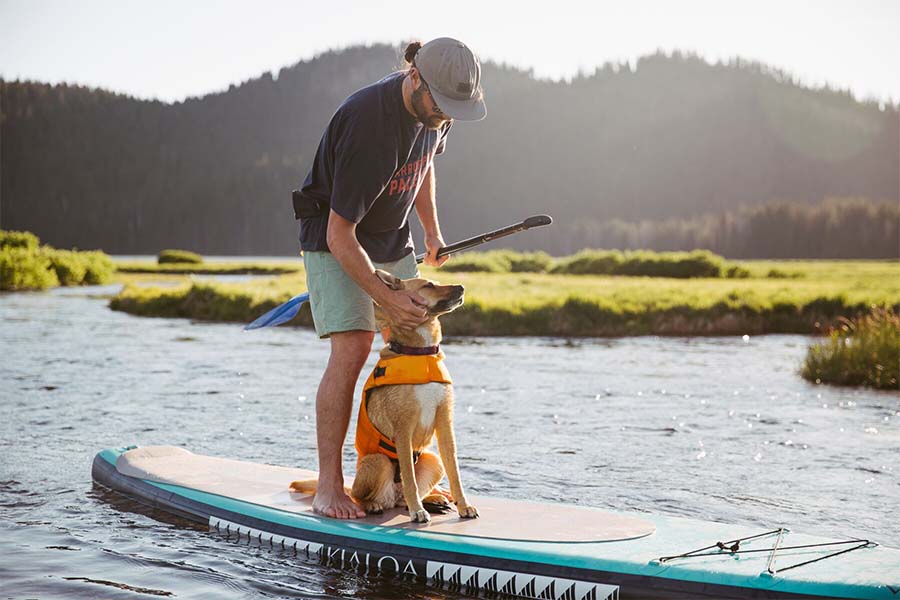Posted by Ruffwear on Jun 01, 2023
How do you and your dog start paddle boarding without any experience?
GEAR TO GET OUT THERE
A board and a paddle:
Inflatable paddleboards are great for paddling with dogs. Compared to a hard board, the surface has better grip for dog paws and durability for claws. Wider boards tend to be more stable, a great feature for new human and dog duos building confidence and balance on the board together.
Renting or borrowing a board is a great place to start. If (when) you and your dog are hooked on the SUP life and ready to commit, your local paddle shop is a great place to go for help finding the right board.
Human and dog PFDs (Personal Flotation Devices):
The Ruffwear Float Coat™ Life Jacket supports dogs as they swim, but the handle and overall design makes it easier for you to help get them back on the SUP quickly.
For Positive Vibes & High Fives:
Pack plenty of treats with the waist-worn Treat Trader™ so you can reward your dog often as they get the hand of a completely new skill.
For Getting the Wiggles Out:
Sitting on a board can be a lot to ask of some pups. A play session with the floating Lunker™ Toy before getting on board or during a shore break goes a long way for making the whole experience fun.
HOW TO GET YOUR DOG BACK ON THE SUP
Knowing how to get your dog back on your paddleboard is one of the most important skills you'll need to have when paddling with your pup. Maria breaks it down into steps below so you can practice and have a plan when your dog goes for a swim and makes a splash.
When done properly, you shouldn't be lifting your dog back on the board. Instead, you're assisting your dog by taking a small amount of weight from the handle of his life jacket and guiding his natural movements.
Step 1 - Make sure you are positioned in the middle of your board.
Step 2 - Intersect your dog so he's in front of you, with his spine perpendicular to the rails of the board.
Step 3 - Grab the handle located on the back of your dog's life jacket.
Step 4 - Your dog will naturally try to climb up and on with his front paws. When he starts doing so, give a slight tug and lift up on the jacket. This will allow your dog to get a back leg on the board.
Step 5 - Once your dog has weight on one back leg, he can manage the rest, but don't let go of the handle until all four paws are on the board.
Step 6 - Brace for the shake! All your dogs shake after getting out of the water, so don't stand up until after he shakes!
Step 7 - Praise your dog. Don't make a big deal over your dog falling off. Instead, praise him for swimming back to the board.
TOP 10 TIPS FOR STANDUP PADDLEBOARDING
Ruffwear ambassador and author of "How to SUP with your pup", Maria Christina Schultz, offers up her top ten tips for stand up paddleboarding with your dog.
Always make your dog wear a life jacket
There are a lot of misconceptions out there about why dogs should wear life jackets on the water. On paddleboards, the handle on the life jacket is so important because it gives you a way to get your dog back on the board. Also, dogs that love the water may exhaust themselves before they realise they are too tired to swim back to you. Lastly, if you get separated from your dog while on the water, a brightly coloured jacket with help you and other boaters spot him.
Leave the leash on the dock
This is a tricky topic. SUP instructors teach people to always wear a board leash because it keeps you tethered to your most buoyant object - the board. Unfortunately, the law requires dogs to be on leashes in most parks. But the dog's leash can easily get tangled on your leash, or hand overboard and get caught on debris in the water, potentially dragging your dog off the board. It's really a judgement call. If you feel safer with your pup on a leash, attach it to the life jacket and stand on the opposite end. This way the leash is not around your dog's neck, and you can quickly release him if you need to. Consider the conditions of the water you are paddling in, and check the local park rules first!
Keep your nails and feet tidy
Trim your dog's nails and any extra hair in between the pads of his feet before paddling. This will help reduce scratches on the board and keep your dog from slipping.
Add extra grip
Most boards, especially epoxy boards, are very slippery. Adding an extra pad for your dog will make his ride safer. There are a variety if options to choose from, like additional deck pads, rubber bath mats, or a Pup Deck traction pad.
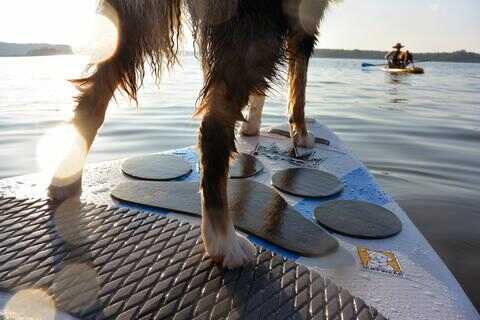
Wear out young or energetic dogs before paddling
No matter how much you train, sometimes it's just as hard for puppies or high-energy dogs to relax on the board. Bring along a water toy like the Lunker™ or Hydro Plane™, and have a game of fetch before you take your dog out on the board. Swimming is great exercise, and it will help cool your dog down before paddling.
Bring along some treats
Never stop training and reinforcing good behaviour. Bring along a few small treats and reward your dog when he's sitting on the board properly and being a good pup.
Practice
Intentionally fall off your board and practice getting back on. Helping your dog get back on the board can be tricky, so know what to expect!
Remember to hydrate
You and your dog will both need lots of water while paddling in the hot sun. Sun reflecting off the water can dehydrate you both quickly. Hydration packs are great options; you can easily access your water, plus it stays a little cooler inside the pack. Also be sure to get a collapsible water bowl like the Quencher™ for your dog. It's lightweight and easily folds up into a hydration pack.
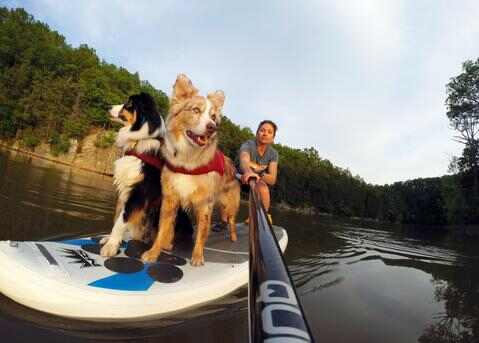
Don't forget about first aid
Have a small first-aid kit if you are going out on a long day trip. Anything from snakebites to torn pads can happen while your dog is out with you. Having a few supplies on hand can make all the difference until you can get back on land. Check out Randy Acker's book, 'Field Guide: Dog First Aid, Emergency Care for the Hunting, Working, and Outdoor Dog', and carry it with you. It's a great reference guide for dog first aid.
Anticipate the jump
When a dog unexpectedly jumps off a board, the board moves, a lot, and everyone usually ends up in the water. When approaching the shore or a dock, go into the safety position and kneel on the board. Sometimes pups get excited when they know it's time to get back to land, plus it's just safe practice to kneel within 15 feet of the shore or dock.

